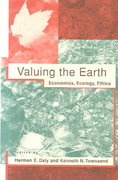Question
As it became apparent to both the North and the South that the Civil War would not end quickly, General Broda of the Confederacy began
As it became apparent to both the North and the South that the Civil War would not end quickly, General Broda of the Confederacy began laying plans for the continued support of his troops. The General well knew that an army marches on its stomach. It was the practice of the Union armies to take along beef on the hoof; it was Broda who pioneered taking along chicken on the claw for the supply of fresh meat for the rebel troops. Broda acquired a large number of chickens and then was concerned with the feeding of the same. Alpheno Chemical Company of Atlanta was chosen as a feed supplier for General Broda's chickens. Alpheno agreed to supply a certain number of "servings" of chicken feed. General Broda specified that each serving must contain at least 5 units of protein, 1 unit of calcium, 12 units of carbohydrates, .2 units of pituitary activator, and between 4 and 6 units of grit. Having received this contract, Alpheno set about to produce this chicken feed at a minimum cost.
At Alpheno's disposal were four ingredients from which the chicken feed could be made: acorns, seaweed, jojoba beans, and clamshells. Alpheno has to make a serving of chicken feed which meets General Broda's requirements. The Table below gives information regarding the nutritional contents of acorns, seaweed, jojoba beans, and clamshells. For example, each Kg of acorns has 4 units of protein, 0 units of calcium, 5 units of carbohydrates, 0 units of pituitary activator, and 1 unit of grit. Each Kg of jojoba has 5 units of protein, .5 units of calcium, 7 units of carbohydrates, 3 units of pituitary activator, and 0 units of grit. At the bottom of the table the requirements in terms of these nutrients as stipulated by General Broda are given. The table also indicates the current costs of the four ingredients. A Kg of acorns costs 40 cents, seaweed costs 10 cents per pound, jojobs cost 90 cents per Kg, and clamshells go for 20 cents a Kg.
Information Table for Alpheno Chemical
Nutrients per pound of ingredients
Cost/Kg.
Ingredients
Protein
Calcium
Carbohydrate
Pituitary Activator
Grit
Ksh. 40
Acorns
4
0
5
0
1
Ksh 0.10
Seaweed
2
1
8
0
0
Ksh . 90
Jojobas
5
0.5
7
3
0
Ksh . 20
Clamshells
0
9
0
0
6
REQUIREMENTS/SERVING:
Minimum5112.24
Maximum----6
OTHER REQUIREMENTS:
Taste Must be at least half seaweed.
PollutionJojobas must be at least 10 percent of acorn level.
Alpheno wishes to synthesize the chicken feed at a minimum cost while meeting the nutritional requirements. There are also two other restrictions that must be satisfied. Alpheno's research department has found that a chicken will not eat a blend of acorns, seaweed, jojobas, and clamshells unless there is more seaweed than all the other ingredients combined. Because it was implicit in Alpheno's agreement with General Broda that the chickens would be willing to eat the feed supplied, this requirement is important. Furthermore, Alpheno's astute marketing manager perceives that if the chickens smell up the Confederate camps, the troops would just as well forgo the chicken in favor of something else. If this happened, Alpheno's lucrative contract for chicken feed would be terminated. The research department at Alpheno Chemical found that the acorns in the diet or feed are chiefly responsible for the aroma. Also, it was discovered that if the ratio of the versatile jojobas bean to the acorns were 1 to 10 or greater, then the aroma would be quite tolerable (in fact, General Broda found it to be pleasing). In conclusion, the feed which Alpheno blends must meet the nutritional requirements, as well as the "taste" and "pollution" requirements, which were just mentioned. Formulate the problem and using Excel or any other software, determine the cost of one serving of chicken feeds.(30 marks)
Question Two
In one of the countries, there is a boom in low grade iron ore mining. The ore, is being mined from three pits and is transported to four processing centres. The table below gives the distance in kilometers from each of the pits to each of the processing centres.
Processing Centres
W
X
Y
Z
Pits
A
2
3
5
4
B
3
5
5
7
C
7
8
5
9
Pit A can produce 80 tons per day, B can produce 30 tons per day while C can produce 50 tons per day. Processing Centre W can handle 40 tons per day, X can handle 30 tons per day, Y can handle 50 tons and Z can handle 40.
Required
a)Beginning with the Northwest corner rule, find the optimal solution (You must provide all tableaus).
b)Beginning with the VAM, find the optimal solution (You must provide all tableaus).
c)Using the least cost method, find the optimal solution (You must provide all tableaus).
d)Using MODI, find the optimal solution (You must provide all tableaus)
e)The government has notified the mining company that it cannot use bridge on the route from pit A to Processing Centre Z. Using the Northwest corner as the starting point, what is the optimal solution if this route is not allowed?
f)Processing Centre Z has experienced a breakdown and no processing can take place. Using VAM, determine the optimal solution.
(40 marks)
Step by Step Solution
There are 3 Steps involved in it
Step: 1

Get Instant Access to Expert-Tailored Solutions
See step-by-step solutions with expert insights and AI powered tools for academic success
Step: 2

Step: 3

Ace Your Homework with AI
Get the answers you need in no time with our AI-driven, step-by-step assistance
Get Started


